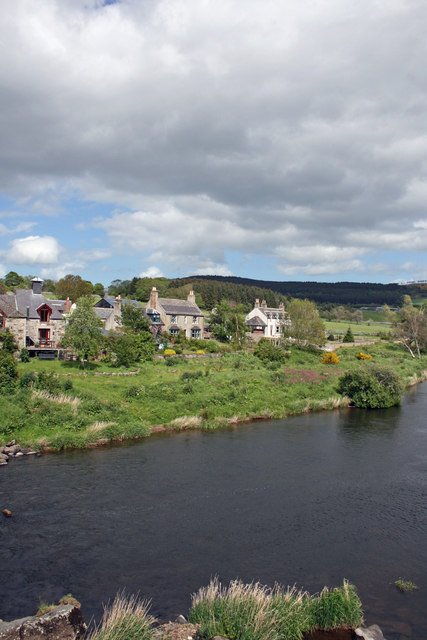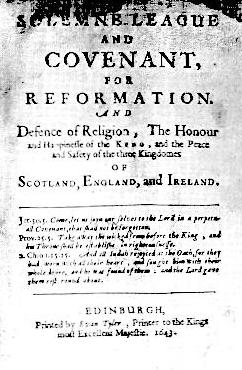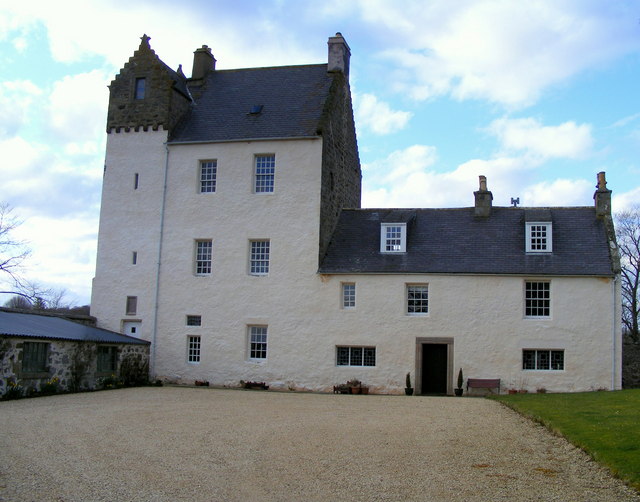|
James Crichton Of Frendraught
James Crichton of Frendraught or Frendraucht was a Scottish landowner involved in a fire on 18 October 1630. Eight guests were killed at Frendraught Castle and arson was suspected. The facts of the case were widely disputed. Family background James Crichton of Frendraught was descended from William Crichton, 1st Lord Crichton. His parents were James Crichton of Frendraught and Janet Gordon, a daughter of Alexander Gordon of Lesmoir. His aunt, Katherine Gordon, married Alexander Burnett and lived at Crathes Castle. After he inherited, Crichton was known as the "Laird of Frendraught" or simply, "Frendraught". Frendraught Castle, now rebuilt, is about east of Huntly, Aberdeenshire, Scotland. He married Elizabeth Gordon, the eldest daughter of John Gordon, 13th Earl of Sutherland at the Castle of Bog of Gight now called Gordon Castle on 25 February 1619. Married women in early modern Scotland did not change their surnames when they married, and she was known as "Elizabeth ... [...More Info...] [...Related Items...] OR: [Wikipedia] [Google] [Baidu] |
Frendraught Castle
Frendraught CastleCoventry, Martin (1997) ''The Castles of Scotland''. Goblinshead. p.184 or House is a 17th-century house, about east of Huntly, Aberdeenshire, Scotland, and west of Largue, on the site of a 13th-century castle. History The original castle was burnt in 1630; the present house was built in 1656, but remodelled in 1753, and extended in 1790. It probably incorporates part of the original castle. The house, which was restored in 1974, is still occupied. The Clan Crichton, Crichtons held the property, which James V of Scotland visited in 1535, but it passed to the Clan Morrison, Morrisons in 1690. The burning of 1630 was during a feud with the Clan Gordon, Gordons. The Lord of Milltown of Rothiemay, Rothiemay, Viscount of Melgum, Lord Aboyne, and four others, were killed in the burning, but the Crichton laird and his people escaped. James Crichton of Frendraught was charged with but acquitted of their murder; but one of his servants, John Meldrum, was executed. ... [...More Info...] [...Related Items...] OR: [Wikipedia] [Google] [Baidu] |
Rothiemay
Milltown of Rothiemay (Scottish Gaelic: ''Ràth a' Mhuigh'') is a small inland village, built mostly of granite, in the north-east of Scotland and is within the Moray council area bordering neighbouring Aberdeenshire across the river to the south-east. Historically part of Banffshire, it is around north of Huntly, and east of Keith. It lies on the banks of the River Deveron, close to where it joins the River Isla. The village has existed for several centuries. The 17th-century cartographer James Gordon (1617–1686) was from Rothiemay. It was the birthplace of James Ferguson FRS (1710–1776), instrument-maker and astronomer. More recently, BBC radio presenter James Naughtie was born and brought up in the village. Rothiemay Castle, partly dating from the 15th century, was rebuilt as a baronial country house in 1788, by James Duff, 2nd Earl Fife. The castle was demolished in 1963. The village has its own primary school, and formerly had a railway station by the River Devero ... [...More Info...] [...Related Items...] OR: [Wikipedia] [Google] [Baidu] |
Solemn League And Covenant
The Solemn League and Covenant was an agreement between the Scottish Covenanters and the leaders of the English Parliamentarians in 1643 during the First English Civil War, a theatre of conflict in the Wars of the Three Kingdoms. On 17 August 1643, the Church of Scotland (the Kirk) accepted it and on 25 September 1643 so did the English Parliament and the Westminster Assembly. English Parliament (First Civil War) At the time, the Protestant leaders of the English Parliament were in conflict with King Charles I. Fearing Irish Catholic troops could join the Royalist army, Parliament requested the aid of the Scots. The Presbyterian Covenanters promised their aid, on condition that the Scottish system of church government was adopted in England. This was acceptable to the majority of the English Long Parliament, as many MPs were Presbyterians, while others preferred allying with the Scots to losing the Civil War. After some haggling a document called "'' The Solemn League and Co ... [...More Info...] [...Related Items...] OR: [Wikipedia] [Google] [Baidu] |
Aberchirder
Aberchirder ( sco, Fogieloan, Gaelic: ''Obar Chiardair'') known locally as Foggieloan or Foggie, is a village in Aberdeenshire, Scotland, situated on the A97 road six miles west of Turriff. Etymology The name Aberchirder, recorded in c.1204 as ''Aberkerdour'' means 'mouth of the Chirder'. It is formed from the Pictish word ''aber'' 'river mouth' and the stream-name ''Chirder'' which is itself formed from the Gaelic words ''ciar'' 'dark, brown' and ''dobhar'' 'water'.''Ordnance Gazetteer of Scotland: A Graphic and Accurate Description of Every Place in Scotland'' , Frances Hindes Groome (1901), p. 5 This stream name is probably an adaptation of an earlier Pictish name. History The village of Aberchirder was founded i ...[...More Info...] [...Related Items...] OR: [Wikipedia] [Google] [Baidu] |
Kinnairdy Castle
Kinnairdy Castle is a tower house, having five storeys and a garret, two miles south of Aberchirder, Aberdeenshire, Scotland.Lindsay, Maurice (1986) ''The Castles of Scotland''. Constable. p. 317 The alternative name is Old Kinnairdy. History The castle is built on land that belonged to the Innes family from the late 14th century; an earlier tower was probably built in about 1420, which replaced a wooden motte and bailey structure. The castle was sold by the Innes family to Sir James Crichton of Frendraught in 1629. Subsequently it came to the Reverend John Gregory in 1647, then passed to his brother David, a doctor who has been claimed to be the constructor of the first barometer. David's success in forecasting the weather with the help of the barometer led to his being accused, but not convicted, of witchcraft. The property was sold by his third son to Thomas Donaldson, a merchant from Elgin, who restored and re-roofed the castle during the eighteenth century, transforming ... [...More Info...] [...Related Items...] OR: [Wikipedia] [Google] [Baidu] |
Sir Thomas Hope, 1st Baronet
Sir Thomas Hope, 1st Baronet Hope of Craighall (1573–1646) was a Scottish lawyer, and Lord Advocate under Charles I. Life He was the son of an eminent Edinburgh merchant, Henry Hope, and his French wife, Jacqueline de Tott, her parents of Swedish origin. His grandfather John Hope was an Edinburgh merchant of French origin. Admitted as an advocate in 1605, he made his reputation in 1606 defending John Forbes, and five other ministers at Linlithgow who were charged with high treason. In 1608 he was on a team of lawyers, described as "the most learned and best experienced" who defended Margaret Hartsyde, a servant of Anne of Denmark accused of stealing her jewels. He prepared the deed revoking James VI's grants of church property in 1625. He was appointed Lord Advocate under Charles I in 1626, and held the office until 1641. He was created a Baronet of Nova Scotia on 11 February 1628. Hope worked for landowners, including Mary, Countess of Home, and Marie Stewart, Countes ... [...More Info...] [...Related Items...] OR: [Wikipedia] [Google] [Baidu] |
Royal Mile
The Royal Mile () is a succession of streets forming the main thoroughfare of the Old Town of the city of Edinburgh in Scotland. The term was first used descriptively in W. M. Gilbert's ''Edinburgh in the Nineteenth Century'' (1901), describing the city "with its Castle and Palace and the royal mile between", and was further popularised as the title of a guidebook by R. T. Skinner published in 1920, "''The Royal Mile (Edinburgh) Castle to Holyrood(house)''". The Royal Mile runs between two significant locations in the royal history of Scotland: Edinburgh Castle and Holyrood Palace. The name derives from it being the traditional processional route of monarchs, with a total length of approximately one Scots mile, a now obsolete measurement measuring 1.81km. The streets which make up the Royal Mile are (west to east) Castlehill, the Lawnmarket, the High Street, the Canongate and Abbey Strand. The Royal Mile is the busiest tourist street in the Old Town, rivalled only ... [...More Info...] [...Related Items...] OR: [Wikipedia] [Google] [Baidu] |
Gladstone's Land
Gladstone's Land is a surviving 17th-century high-tenement house situated in the Old Town of the city of Edinburgh, Scotland. It has been restored and furnished by the National Trust for Scotland, and is operated as a popular tourist attraction. Early owners and tenants The "Land" (sited at 481 and 483 Lawnmarket) was originally built in 1550, but was bought and redeveloped in 1617 by a prosperous Edinburgh merchant and burgess, Thomas Gledstanes, and his wife, Bessie Cunningham. The work was completed in 1620. Its prominent siting on the Royal Mile (between Edinburgh Castle and the Palace of Holyrood) and the extent of its accommodation mark out the affluence of its mercantile owner. Today, the restored building allows an insight into varieties of Edinburgh life of the period. The cramped conditions of the Old Town, and the physical size of the lot, meant that the house could only be extended in depth or in height. As a result, the house is six storeys tall. Gledstanes reside ... [...More Info...] [...Related Items...] OR: [Wikipedia] [Google] [Baidu] |
Gowrie House (Perth, Scotland)
Gowrie House was a building in the centre of Perth, Scotland, which existed in the 16th and 17th centuries. An earlier house on the site was standing in 1518, built or occupied by Elizabeth Gray, Countess of Huntly and the second wife of Alexander Gordon, 3rd Earl of Huntly. A document of 1552 mentions the great lodging that she had built in the Speygate of Perth.Robert Scott Fittis, ''The Merchant Princes of Bonnie St Johnstoun'' (Perth, 1875), p. 30. Latterly, the rebuilt and extended house was the home of George Hay, 1st Earl of Kinnoull (1570–1634), amongst others. Gowrie House formerly stood on what became Tay Street, its location now occupied by Perth Sheriff Court, County Buildings and 46–52 Tay Street.''Perth History Tour'', Jack Gillon (2020) The building extended from Water Vennel to Canal Street, bounded on the west by Speygate and on the east by the River Tay. Its entrance was an arched gateway on South Street. In documentation from 1911, a Gowrie Rest House ... [...More Info...] [...Related Items...] OR: [Wikipedia] [Google] [Baidu] |
Perth, Scotland
Perth (Scottish English, locally: ; gd, Peairt ) is a city in central Scotland, on the banks of the River Tay. It is the administrative centre of Perth and Kinross council area and the historic county town of Perthshire. It had a population of about 47,430 in 2018. There has been a settlement at Perth since prehistory, prehistoric times. It is a natural mound raised slightly above the flood plain of the Tay, at a place where the river could be crossed on foot at low tide. The area surrounding the modern city is known to have been occupied ever since Mesolithic hunter-gatherers arrived there more than 8,000 years ago. Nearby Neolithic standing stones and circles date from about 4,000 BC, a period that followed the introduction of farming into the area. Close to Perth is Scone Abbey, which formerly housed the Stone of Scone (also known as the Stone of Destiny), on which the King of Scots were traditionally crowned. This enhanced the early importance of the city, and Perth becam ... [...More Info...] [...Related Items...] OR: [Wikipedia] [Google] [Baidu] |
George Hay, 1st Earl Of Kinnoull
George Hay, 1st Earl of Kinnoull, (1570 – 16 December 1634) was a Scottish nobleman and political official. Biography He was the second son of Peter Hay of Megginch and Margaret, daughter of Patrick Ogilvy of Inchmartin. No date is recorded for his birth, but he was baptised 4 December 1570. Around 1588, Hay entered Scottish College at Douai, where he studied under his uncle Edmund Hay until 1596. He was initially introduced to court by his cousin the Earl of Carlisle. Hay served as a Gentleman of the Bedchamber from 1596. On 18 February 1598, he was granted the Carthusian priory of Perth and a seat in Parliament, but, finding the rents too low to live on, he returned the peerage. On 15 November 1600, he was given land for his services to the King on the occasion of the Gowrie conspiracy. He was knighted sometime before 18 October 1607, when he first appeared in the records as Sir George Hay. He was appointed Lord Clerk Register and a member of the Privy Council on 26 Ma ... [...More Info...] [...Related Items...] OR: [Wikipedia] [Google] [Baidu] |
Yett
A yett (from the Old English and Scots language word for "gate") is a gate or grille of latticed wrought iron bars used for defensive purposes in castles and tower houses. Unlike a portcullis, which is raised and lowered vertically using mechanical means, yetts are hinged in the manner of a traditional gate or door, and secured by bolts attached to the yett, or by long bars drawn out from the wall or gateway. Geographical distribution Yetts are predominantly found in Scotland – where most towers, particularly the later ones, were equipped with them rather than portcullises – but some iron gates are found in the Border counties of England.Toy, p. 198 While few references to yetts exist outside Scotland, an English report of 1416 on Roxburgh Castle (then in English hands) contained recommendations for the insertion of iron gates. Yetts are not restricted to any one region or district within Scotland, but are widespread throughout. Similar grille constructions, frequently ... [...More Info...] [...Related Items...] OR: [Wikipedia] [Google] [Baidu] |







